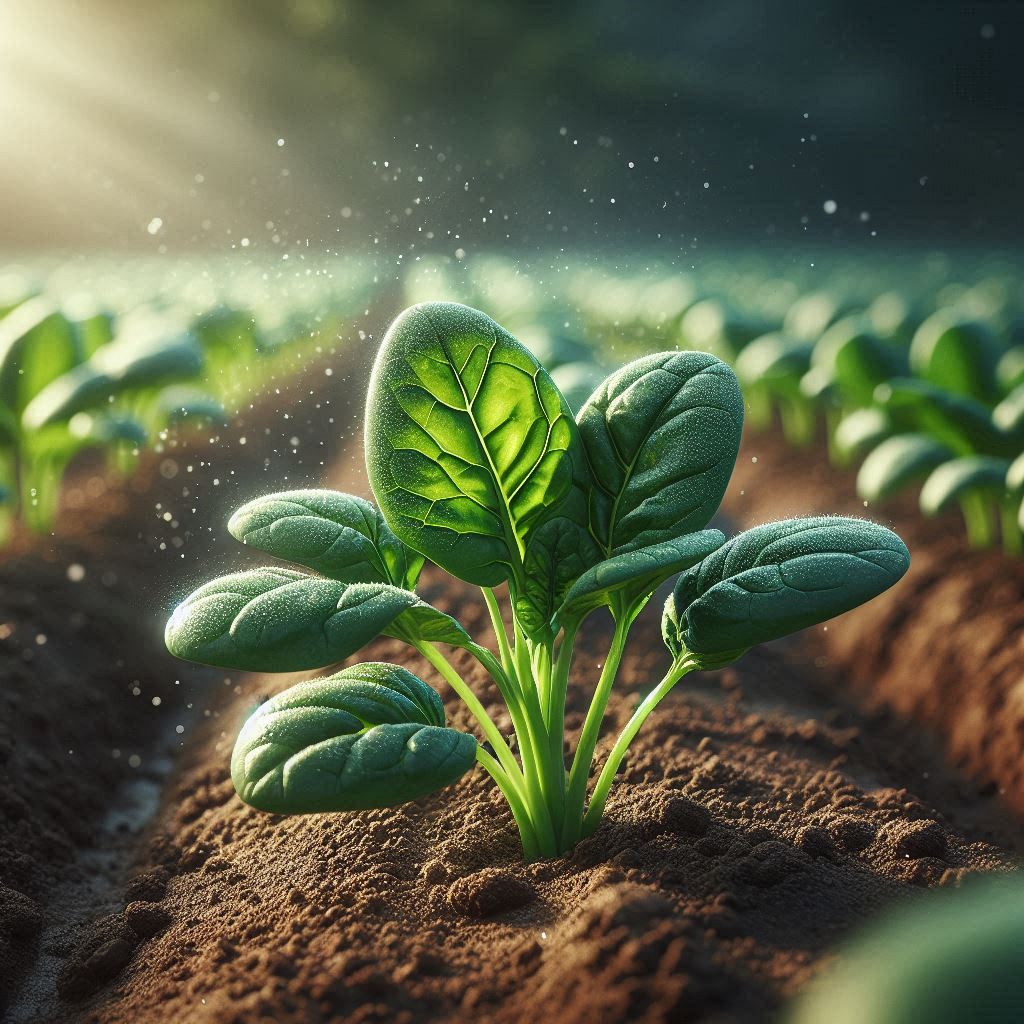Farming Simulator is one of the most popular simulation games globally. Recently, we discovered that the developers will be releasing the new version, Farming Simulator 25, this fall. To celebrate, we have prepared an article about potential new crops like rice and spinach. We will also review other potential crops that are likely to be introduced through mods. One of the biggest news for FS25 is that maps will now include not only Europe and America but also Asia. This is the first time in the game’s history that players will have the opportunity to farm on the Asian continent.
Crops in previous Farming Simulator versions
Let’s take a look at Farming Simulator’s past. Although the history of the Farming Simulator did not start with the FS17 version, let’s start with it. The following crops were introduced in Farming Simulator 17: Wheat, Barley, Canola, Corn, Sunflowers, Soybeans, Potatoes, Sugar Beets, Poplar (for wood chips), Oilseed Radish (used as a cover crop for fertilization), and Grass. Many of these crops were newly introduced in this particular game. They required special techniques to grow, which were also included in the game, such as a potato harvester.
The following new crops were introduced in FS19: Oats, Cotton, and Sugarcane. These cultures also expanded gameplay and introduced new farming techniques.
Farming Simulator 22 game moved to the south of Europe, where Grapes, Olives, and Sorghum are grown. The game included maps of southern Europe that were adapted specifically for these new cultures to cultivate.
Rice in FS25
Rice is incredibly important in real-world agriculture for several reasons. It is a main food source for more than half of the world’s population, especially in Asia, providing a significant portion of daily calories for billions of people. Economically, rice farming and related activities provide jobs for millions, particularly in developing countries, and countries like Thailand, Vietnam, and India earn substantial revenue from exporting rice.

Rice’s versatility in agriculture is notable as it can grow in diverse environments, from flooded fields to dry areas. Scientists have developed resilient rice strains that can handle various climates, pests, and diseases. Culturally, rice is central to many traditions, festivals, and cuisines, and its availability is crucial for the stability and food security of many societies. Nutritionally, rice is a key source of carbohydrates, providing essential energy, along with important vitamins and minerals.
However, rice farming uses a lot of water, presenting challenges in dry regions, but efforts are ongoing to make rice farming more environmentally friendly. Overall, rice is vital for food, jobs, culture, and the economy, with continued work to improve its sustainability.
Soil preparation
In the Farming Simulator, preparing fields for rice planting involves several key steps. Players first need to plow or cultivate the field to break up the soil, ensuring it is loose and ready for planting. This step is crucial for creating a good seedbed. After plowing, players often apply fertilizer to enrich the soil with the necessary nutrients. In some cases, they may also use a lime spreader to balance the soil’s pH level, which is essential for optimal rice growth.
Planting
Planting rice in the Farming Simulator has unique aspects compared to other crops. Players typically use a specialized rice planter, which is designed to plant seeds in paddy fields. Paddy fields are flooded with water, mimicking real-world conditions where rice thrives in wet environments. The game requires players to manage water levels in these fields, ensuring they are adequately flooded for the rice to grow properly.
Growth stages
Rice undergoes several growth stages, each requiring specific actions from players. Initially, players must ensure that the water levels in the paddy fields are maintained. As the rice seedlings grow, players need to keep an eye out for weeds and pests, applying herbicides and pesticides as needed. Fertilization may also be necessary during certain growth stages to ensure the rice plants receive enough nutrients. Additionally, players need to monitor the water levels continuously, making adjustments to prevent the fields from drying out.
Harvesting
When the rice is fully grown and ready for harvest, players use a rice harvester, a specialized piece of equipment designed for efficiently collecting rice from paddy fields. The harvesting process involves cutting the rice plants and separating the grains from the stalks. Players need to ensure that the harvester is correctly maintained and operated to maximize yield. After harvesting, the rice grains are typically transported to a storage facility or sold for profit.
In summary, growing rice in the Farming Simulator involves careful soil preparation, managing paddy fields for planting, attending to various growth stages with appropriate care, and using specialized equipment for harvesting. Each step mirrors real-world rice farming practices, offering players an immersive and educational experience.
Growing Spinach
Spinach is celebrated both for its nutritional value and its cultivation practices. This leafy green vegetable holds significant importance in diets worldwide due to its rich array of vitamins, minerals, and health benefits. Nutritionally, spinach is dense in vitamins A, C, and K, as well as folate and iron, making it a vital component for maintaining overall health. Its low calorie count and high fiber content further contribute to its appeal in balanced diets.
Cultivation-wise, spinach thrives in cool, moist climates and can grow in various soil types, though it prefers well-drained, fertile soils. It is typically grown from seeds, which are sown directly into prepared beds or containers. Spinach requires consistent watering to keep the soil moist but not waterlogged. Mulching helps retain moisture and suppress weeds, supporting healthy growth.

Harvesting spinach involves picking the outer leaves as they mature, leaving the inner leaves to continue growing. This method allows for continuous harvesting throughout the growing season. Spinach is versatile in culinary applications, used fresh in salads, cooked in soups and stir-fries, or blended into smoothies for added nutrition.
Overall, spinach stands out not only for its nutritional benefits but also for its adaptability in cultivation and its versatile use in culinary traditions worldwide. Its ability to thrive in various climates and its rich nutrient profile make it a valuable addition to both home gardens and commercial agriculture, supporting healthy diets and sustainable food systems globally.
Soil Preparation
Begin by preparing the soil for spinach cultivation. This typically involves plowing or cultivating the field to loosen the soil and create a suitable seedbed. Adding fertilizers or lime may also be necessary to ensure the soil has adequate nutrients and pH balance for spinach growth.
Planting
Spinach seeds are then planted in the prepared soil. Players use a seeder appropriate for small seeds like spinach, ensuring proper spacing and depth. The seeder is attached to a tractor, allowing efficient planting across the field.
Growth stages
Spinach goes through several growth stages, each requiring specific care:
- Germination: After planting, spinach seeds germinate within a couple of weeks under optimal conditions of moisture and temperature.
- Seedling Stage: Seedlings require consistent watering to establish roots and grow sturdy leaves.
- Mature Plant Stage: As spinach matures, players monitor for pests and diseases, applying pesticides or herbicides as needed to protect the crop.
- Harvest Readiness: Spinach is ready for harvest in about 40-50 days after planting, depending on growing conditions.
Harvesting
Harvesting spinach involves manually cutting the mature leaves or using a specialized harvester attachment for leafy greens. Careful handling is essential to avoid damaging the delicate leaves. Once harvested, spinach can be stored or sold for profit, contributing to the player’s agricultural success in the game.
In summary, growing spinach in the Farming Simulator 25 involves thorough soil preparation, precise planting techniques, attentive care during growth stages, and efficient harvesting methods. These processes simulate the challenges and rewards of real-world spinach cultivation, providing players with a realistic farming experience within the game.
Potential crops with FS25 mods
Although only two new crops have been officially announced for Farming Simulator 25: rice and spinach, we believe that many more crops will be integrated with the mods. In Asia, it is popular to grow bamboo, tea, soybean. There are also many other popular Asian cultures that we will cover in the following article.
Bamboo cultivation
Bamboo is a versatile plant with numerous uses beyond just culinary purposes. In Farming Simulator, cultivating bamboo could involve:
- Soil Preparation: Bamboo thrives in well-drained soil with plenty of organic matter. Players might need to prepare the soil by adding compost or organic fertilizers.
- Planting: Bamboo can be propagated through rhizomes or seeds. Players would plant bamboo shoots at appropriate depths and spacing.
- Growth Stages: Bamboo grows rapidly, especially in warm, humid climates. Players would need to manage its growth by pruning and thinning to promote healthy shoots.
- Harvesting: Harvesting bamboo involves cutting mature culms for various uses, such as construction, crafts, and even as a sustainable source of biomass.
Tea growing
Tea is a popular beverage globally and a significant agricultural product in several Asian countries. In Farming Simulator, tea cultivation could involve:
- Soil and Climate Requirements: Tea plants prefer acidic soil and cool, moist climates. Players would need to choose suitable locations and possibly adjust soil pH.
- Planting and Maintenance: Tea is typically grown from young plants or cuttings. Players would plant these in rows on hillsides or flat terrain, mimicking traditional tea plantations.
- Growth and Pruning: Tea bushes require regular pruning to promote new growth and maintain plant health. Players would manage shade and moisture levels to optimize tea leaf production.
- Harvesting and Processing: Harvesting tea involves selectively picking tender leaves, usually done by hand to ensure quality. Players could then process tea leaves through drying and fermentation stages, reflecting the intricate steps in tea production.

By integrating bamboo and tea cultures into Farming Simulator 25 through mods, players would not only experience new agricultural practices but also immerse themselves in the cultural traditions associated with these crops. These additions would enhance gameplay diversity and enrich the farming simulation with unique challenges and rewards specific to Asian agricultural practices.
Conclusion
In conclusion, exploring crop types such as rice, spinach, and various Asian crops in farming simulators offers not only an immersive gaming experience but also valuable insights into agricultural practices around the world. Each crop brings its own set of challenges and rewards, mirroring the complexities of real-life farming.
Through meticulously simulating the cultivation processes—from soil preparation to harvesting—these games educate players on the nuances of agricultural management. They highlight the importance of sustainable practices, strategic planning, and the impact of weather conditions on crop yields.
Moreover, the integration of game mods further enhances this experience by expanding crop variety and introducing innovative farming techniques. Mods not only cater to diverse player interests but also reflect ongoing advancements in agricultural technology and practices.